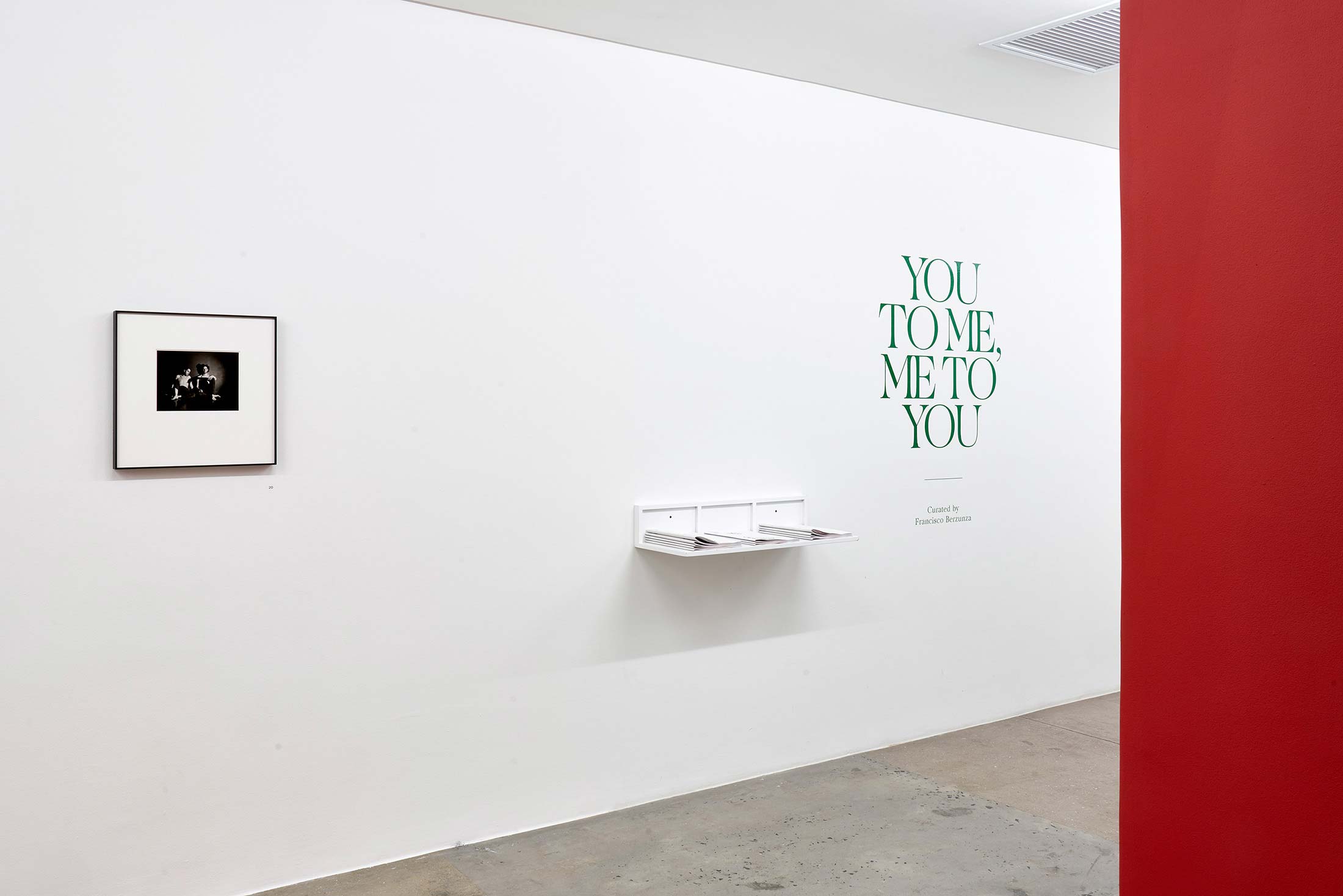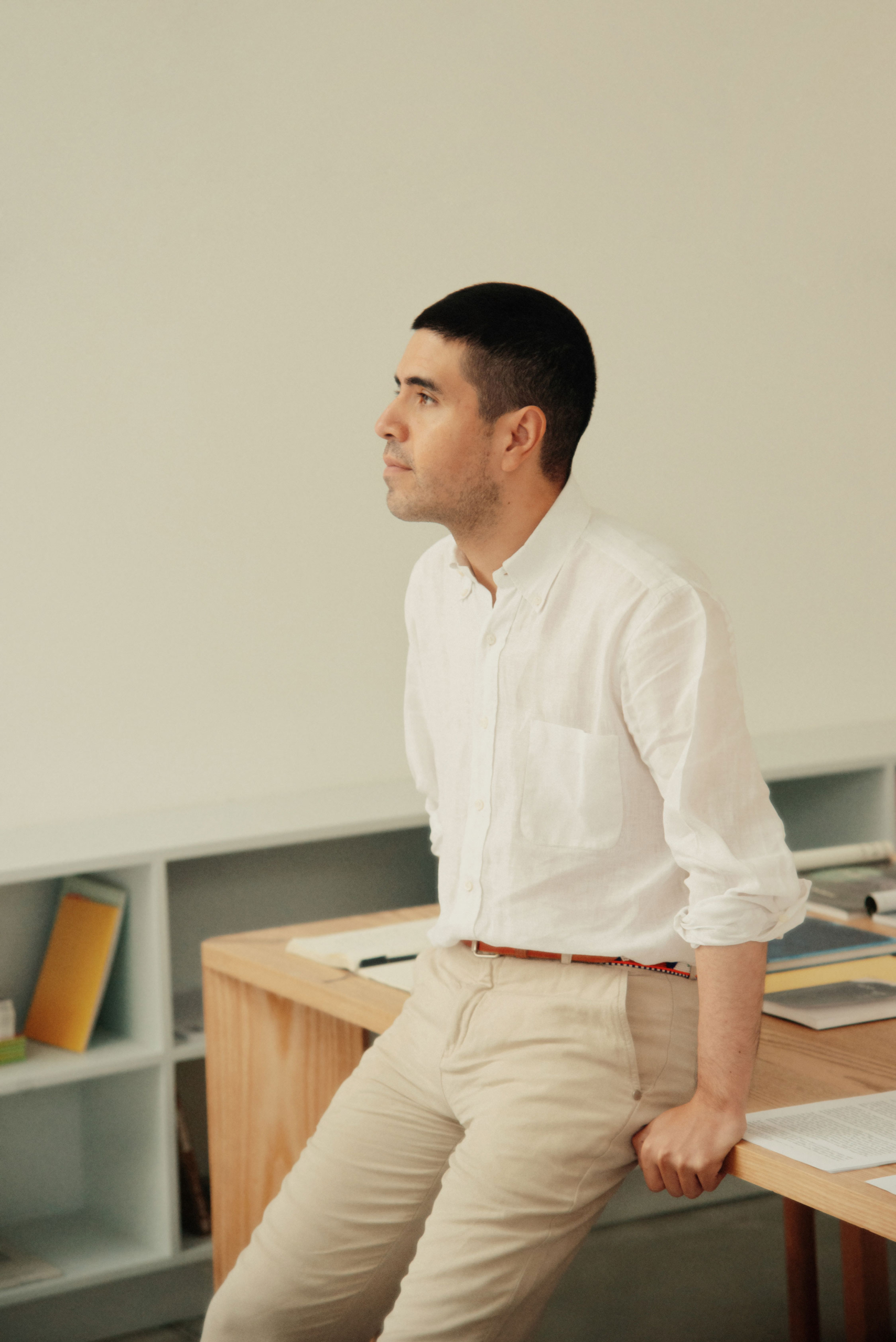Francisco Berzunza is a historian based in Mexico City. He has curated exhibitions with Slavs and Tatars, Dexter Dalwood and Alfredo Jaar amongst others. His latest show, ‘You to Me, Me to You’, ran at A4 Arts Foundation in Cape Town earlier this year.
The exhibition marks a return for Berzunza from his home in Mexico, to South Africa. Having lived in Cape Town in 2014 and again in 2016, Berzunza became intimately connected to the city and its artistic practitioners. On his return to Mexico, he determined to begin a dialogue between artistic communities working from and around these two countries. His efforts produced the first iteration of Hacer Noche (Crossing Night) in Oaxaca, 2018, which asked after practices of death and commemoration. Artists Georgina Gratrix, Jo Ractliffe, Kemang Wa Lehulere, Moshekwa Langa, Pieter Hugo, and James Webb were among the artists present in Hacer Noche and Berzunza invited them to participate in ‘You to Me, Me to You’.
Berzunza sits on the Development Committee Board of the UK’s National Gallery and advises financial institutions in the field of cultural policy.
Q > “You to Me, Me to You”: tell us about why you chose this title for the show?
A > As I was conceiving the exhibition, a recent memory played in my mind very much in loop for weeks already. It was a dialogue between the guy I am in love with and myself. After my love-declaration at the Ministry of Public Education in Mexico City, I asked him if he wanted to be “Fernando” to me (that’s his name), to which he responded, “only if you’ll be ‘Francisco’ to me”. Hence an exhibition title and a concept were coined.

Installation view: Pedro Slim, Untitled (2023). You to Me, Me to You, curated by Francisco Berzunza, 12 August–18 November 2023. Image courtesy of A4 Arts Foundation
Q > In what ways has your background (someone who studied geography and political science — instead of art history) flavour your approach to this exhibition?
A > I think having studied disciplines other than Art History or Arts in general has saved me from certain dogmatism which permeates exhibition-making these days. It’s important to be informed about what’s happening today, it’s extremely important to understand how culture has been presented and how ideas have been debated throughout the past. But I appreciate being able to operate with autonomy from… let’s call it “the guild”.
Q > How do you forge (and sustain!) relationships with artists?
A > Most artists I work with are or later become my friends. As most of my friends can attest, my friendships in general are very intimate and in the queer sense of the concept, they are my family. Sean O’Toole recently pointed out that it’s starting to look as if I am forming a recurring cast with the artists I work with, and I have to say I love this idea.
Q > Learnings — with all the multitudes around love, was there any particular work which showed you a new type or texture of love? And was there any part in this curatorial project that offered you a surprising insight?
A > The multiplicity, permanence and omnipresence of love were very much explored in this project. James Ivory said at one point that it seemed like there were three possible outcomes to the story and those outcomes were all represented by one work of art: a) it was all a dream (Manuel Alvarez Bravo, The Dreamer); the character was a male hustler (Pedro Slim, Untitled); or the love is reciprocated (Kemang Wa Lehulere, I love you too”). What happened in the end, and after reconnecting with Fernando, was that the show ended as the show started, in the cleverly touching way Dexter Dalwood depicted it in his work
FF
RE
AR
NN
CA
IN
SD
C
O
In it, one comet leaves two wakes that eventually become one celestial body to the eye. Two, became one.
Q > Language enables us to express different aspects of affection, attachment, or passion associated with the concept of “love”. Bringing love close to home, create a set of sentences that incorporates the phrases below:
A >
Love for drama.
Love of the kind which stories are made of.
In love with Fernando.
Love to me is as uniquely human as art.
Love about beauty.
Love between beings is what keeps us making life happen.

Francisco Berzunza. Photography by Juan Esteban Montes
Q > When curating a show and working with artists you are also searching for your own answers — what do you seek to unpack, share, encourage?
A > It varies depending on the project. By now, I have developed a very unique approach to curating called “emotional curating”. I am very firm in the belief that my experience allows me to speak out and the stories I’d like to tell are narrated from this particular position. I strongly disapprove today of those who weaponise the lives of others to advance their own agendas.
Q > Predictions: what is something you strongly believe is going to come to pass.
A > I think suffering will become more visible.
Q > What’s your favourite way to spend a weekend?
A > In the company of people. Observing and conversing.
Q > An unexpected pleasure you’ve encountered in the last year?
A > Holding hands.
Q > Legacy: What do you hope to leave behind?
A > I hope the people I love love me with the same intensity as I’ve loved them.
